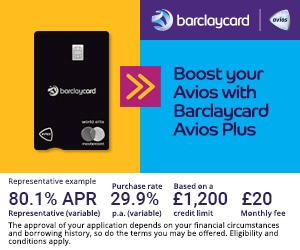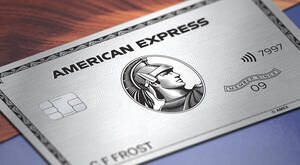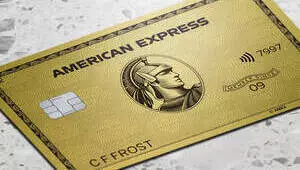-
Hi All,
My wife and I have a trip to Australia coming up in April. We’re flying out LHR-DOH-ADL via Qatar (with a barmy technical 6hr layover in MEL). We then have a bunch of domestic flights before returning PER-SIN via Singapore Airlines and then SIN-LHR with BA. Hence me posting here rather than elsewhere.
I am a dual national, holding UK and Australian passports. I’ve not travelled on my Australian passport for many years and have realised I am not 100% sure how this is done. I renewed the Aussie passport on the insistence of my Australian mother who wants me to ‘keep the connection’! I can’t really blame her but it was an absolute ballache to achieve when I got it done back in 2022.
Info from the Australian High commission suggests that I should depart the UK on my Aussie passport and enter Australia on it. Details Here So far so clear. The questions I have arise around whether I should go and change my passport details with all the airlines to reflect my Australian citizenship. I notice that Qatar (the country) doesn’t recognise dual nationality. Also, when I arrive in Singapore, is there anything preventing me arriving on my Aussie passport and then departing on my UK passport. I am guessing this may cause problems.
I’ve read some things that suggest that I should just present both passports in most countries, but obviously this may cause an issue in Qatar as they don’t recognise the dual nationality.
Anyone who can advise and/or shed light would be hugely appreciated. I asked this question over on Flyertalk but I didn’t feel like I got a clear answer.
When checking in for the Qatar flight in London, present your Australian passport. Remember there is no outbound immigration in the UK (i.e. apart from check in and then boarding, one does not have show a passport to an immigration official).
When departing Australia (assuming your flights are two separate bookings), present your Australian passport (this will be sufficient for entry into Singapore).
If you are clearing immigration in Singapore, you will need to arrive and depart on the same passport (the e-gates will not open on departure unless you use the same passport). There is a pre-arrival form to complete for Singapore, and the passport will need to match the details provided in that form. It makes no difference in Singapore whether you use a British or Australia passport.
Overall, there’s no need to be too concerned. There are over a million British-Australian dual nationals and airlines deal with these circumstances daily.
I’m also Aus/UK dual national (and also have connections to ADL!).
The key thing to think about is why someone wants to see your passport – this means you will use different passports at different parts of the journey through the airport. Border agents care if you’re entering legally or if your departure tallys up to a legal entry. They don’t care if you can legally enter your next destination. The airline only cares whether you can get into the destination country you’re heading to. They don’t (really) care if you arrived legally in your port of departure.
Bearing that in mind, here’s how I would handle two passports, backed up by the annecdotes from when I got it wrong.
BORDERS:
At the UK border (in or out), ALWAYS use your UK passport
(UK officials have got annoyed at me for even holding my other passport, claiming they can only look at the first passport they see. I bet the claim was spurious, but I’d still keep you Aussie in your bag if I were you)At the Australian border (in or out), ALWAYS use your Aussie passport
(I once showed an Aussie border officer my UK passport when leaving Aus because I was using the ESTA it to fly to the states and got a lecture)In a third country (Singapore) you MUST enter and exit on the same passport – if you enter on one and try exiting on the other the system may think you’re there illegally (while the “you” who entered on teh other passport will overstay their visa!) It doesn’t really matter which you use, but because in your case it’s a stopover on the way to the UK you may find it simpler to use the UK one rather than juggle two passports (see below)
AIRLINES:
Use your Aussie passport for the booking going to Aus, to prove you can enter Aus. The probably includes check-in in the UK.
(It seems odd, but it’s nicer than being told at the desk taht you can’t fly until you produce a second passport – yup, I’ve done that too!)Use your UK passport to the booking flying back to the UK, to prove you can enter the UK. If it’s the same booking, change the passport in plenty time before online check-in opens.
(I nearly missed a KUL-LHR flight and one factor was being unable to check in online because I couldn’t switch to my UK passport and MAS thought I couldn’t enter the UK)I would use the Aussie passport for domestic flights in Australia for ease.
Hope that helps…
Thanks for this extremely clear reply. Much appreciated.
So, that leaves me with two final questions:
1. Shall I just adjust all my API data with the airlines to show my Aussie passport data (seeing as that’s what I will be travelling on? This seems fairly obvious now I guess, but just double checking.
2. When re-entering the UK, should I present my UK or Aus passport and will it even matter?!
No worries (I do the journey four times a year as a dual national, including yesterday!).
1. Yes (apart from the flight back to the UK from Singapore, when you should enter your British passport details).
2. British passport (for many reasons, including Australian passport holders now require an ETA to enter the UK).
You need to re-enter the U.K. on your U.K. passport.
I wrote a long reply as I’ve done this enough times with that combo of passports, but looks like it’s stuck in the moderation queue or something.
The thing to remember is the airline and border control care about different things, so you might show them different passports in the same airport.
The airline cares if you’re ok to enter your destination. So check in with Australian travelling to Australia and British when returning home from Singapore.
Border control cares if you’re legal in their country. So always show British passport to British border and Aussie to Aussie. For Singapore ensure you enter and leave on the same passport.
Fantastic. Cheers all. We’re spending 24hrs in Singapore. Going to do the Gardens by the Bay.
So I’ll enter and leave Singapore on the Aussie passport but give the British passport details as my API to BA for that final flight SIN-LHR
Thanks for clarifying!
The normal rule is “give the airline the passport of the country you’re going to” and “give immigration the passport of the country you’re in”, with any intermediate stops your choice based on visa rules
However, there’s (recently?) an extra wrinkle – departing Australia, the airline does an electronic check that you haven’t overstayed your visa. If you hand over your British passport when checking in for your flight home, that’ll fail as you didn’t enter Australia on your British passport. So, hand the checkin staff in Australia both passports
However, there’s (recently?) an extra wrinkle – departing Australia, the airline does an electronic check that you haven’t overstayed your visa. If you hand over your British passport when checking in for your flight home, that’ll fail as you didn’t enter Australia on your British passport. So, hand the checkin staff in Australia both passports
Interesting, I didn’t know that!
That rule was not in place in 2017… or at least it wasn’t applied when I flew SYD-HNL on my British passport.
Given the OP isn’t flying home direct but has a stopover and is talking about using Aussie passport for that journey, I’d suggest it’s still simpler for them to ignore the British passport when leaving Aus unless specifically asked for it. (It’s also a good reason to be using the Aussie passport for that leg)
Super pertinent information for flying Aus-UK without a stopover though.
I am a dual national, holding UK and Australian passports. I’ve not travelled on my Australian passport for many years and have realised I am not 100% sure how this is done. I renewed the Aussie passport on the insistence of my Australian mother who wants me to ‘keep the connection’! I can’t really blame her but it was an absolute ballache to achieve when I got it done back in 2022.
The Australian government does like to make things unnecessarily complicated. In any case, all citizens must have an Australian passport to enter and leave Australia. While there are no penalties for not doing so except your time and getting scolded by ABF agents, in order to check in for a flight you would have to apply for an eVisitor visa on your UK passport and lie when it asks you about your other citizenships.
I notice that Qatar (the country) doesn’t recognise dual nationality.
but obviously this may cause an issue in Qatar as they don’t recognise the dual nationality.
It will not cause any issues in Qatar because 1) you won’t interact with any Qatari immigration officers and 2) Qatar citizens are not allowed to have another nationality, but you are not a Qatar citizen and it is a fact that you are a citizen of two other countries whose citizenship policies Qatar has no control over.
It makes no difference in Singapore whether you use a British or Australia passport.
But what about the next trip? I thought that you should always use the same country’s passport to enter and exit another country, although I have come to realise that most countries haven’t kept very good records until recently.
I have travelled UK-BKK-UK many times obviously using British passport, but lately for reasons out of my control I had to travel Aus-BKK-Aus while not in possession of my British passport. The Thai immigration officer got very frustrated as his biometric system insisted that I was British (from previously providing biometrics on that passport) while his API system insisted I was Australian (because it now operates solely on the API submitted by the airline). He had to call a supervisor and they took 15 minutes of continuous typing to sort it out.
I would use the Aussie passport for domestic flights in Australia for ease.
When have you ever needed a passport for a domestic flight in Australia?
(for many reasons, including Australian passport holders now require an ETA to enter the UK).
You need to re-enter the U.K. on your U.K. passport.
No, you don’t need to use the British passport to enter the UK. It seems that British citizens are allowed to get ETAs on foreign passports, so you could use the Aussie one if you paid.
Also ETAs are currently not checked by UK immigration, so you could even check in with a British passport and use the Aussie passport (without ETA) at the UK e-gates. Of course at some point this will stop working.
Why would you pay to get back into your own country? Also the ETA only allows you to stay for 6 months, so why would you risk the complications of being tagged as an overstayer (not to mention causing extra work for border staff)?
Thanks for all this info guys. I’m reassured to discover that this is quite a complex subject and I wasn’t being dense.
I think I am following most of this now.
The area where I remain slightly unclear is the PER-SIN-LHR element.
I provide Singapore Airlines with my Aussie API data and then on arrival in Singapore show my British passport. The next day I show my British passport when exiting the country but provide BA with my British API data for the final flight home. At LHR I clear immigration on my British passport. I think that’s all correct but if I’ve missed something, let me know!
Hang on… my wife has me second guessing this again.
PER-SIN via Singapore: British API data but show Aussie Passport to ABF on departure and British Passport to Singapore immigration on arrival.
SIN-LHR via BA: British API data and show British passport at both ends.
Is that correct?
Why would you pay to get back into your own country? Also the ETA only allows you to stay for 6 months, so why would you risk the complications of being tagged as an overstayer (not to mention causing extra work for border staff)?
If you’re an Australian who lives in Australia and only visits the UK rarely, but happen to be a British citizen, an ETA is cheaper than a British passport (though a British passport might be useful depending on where else you want to travel).
An ETA allows you to check in for a flight to the UK, it doesn’t allow you to stay in the UK for any amount of time.
Thanks for all this info guys. I’m reassured to discover that this is quite a complex subject and I wasn’t being dense.
I think I am following most of this now.
The area where I remain slightly unclear is the PER-SIN-LHR element.
I provide Singapore Airlines with my Aussie API data and then on arrival in Singapore show my British passport. The next day I show my British passport when exiting the country but provide BA with my British API data for the final flight home. At LHR I clear immigration on my British passport. I think that’s all correct but if I’ve missed something, let me know!
This would be the best course of action rather than your wife’s suggestion.
As your Aus to UK journey is two separate flights, it’s easier to just have Aus API in the flight that touches Australia, and British API in the flight that touches the UK.
The departure e-gates in Australia are linked to the API, and you must use your Australian passport to depart Australia.
So if the API has British details the e-gates may not work, plus the post above by Gagravarr says the airline will want to see your Aus passport anyway. Although the ABF computer may link both passports once it knows about them.
You can present either passport to Singapore immigration but must use the same one to exit.
As a British citizen you can’t overstay in the UK regardless of what passport you use to enter. Yes the database may get confused if you stay too long and don’t have the same foreign passport in the API the next time you leave the UK. But if you only ever visit the UK for short periods it doesn’t matter.
Hi All,
My wife and I have a trip to Australia coming up in April. We’re flying out LHR-DOH-ADL via Qatar (with a barmy technical 6hr layover in MEL). We then have a bunch of domestic flights before returning PER-SIN via Singapore Airlines and then SIN-LHR with BA. Hence me posting here rather than elsewhere.
I am a dual national, holding UK and Australian passports. I’ve not travelled on my Australian passport for many years and have realised I am not 100% sure how this is done. I renewed the Aussie passport on the insistence of my Australian mother who wants me to ‘keep the connection’! I can’t really blame her but it was an absolute ballache to achieve when I got it done back in 2022.
Info from the Australian High commission suggests that I should depart the UK on my Aussie passport and enter Australia on it. Details Here So far so clear. The questions I have arise around whether I should go and change my passport details with all the airlines to reflect my Australian citizenship. I notice that Qatar (the country) doesn’t recognise dual nationality. Also, when I arrive in Singapore, is there anything preventing me arriving on my Aussie passport and then departing on my UK passport. I am guessing this may cause problems.
I’ve read some things that suggest that I should just present both passports in most countries, but obviously this may cause an issue in Qatar as they don’t recognise the dual nationality.
Anyone who can advise and/or shed light would be hugely appreciated. I asked this question over on Flyertalk but I didn’t feel like I got a clear answer.
Same here, dual national – Australia has exit control, and citizens “should” enter and leave on their Australian passports. It’s not impossible not to. UK has no exit control. You can’t hold a visa for AU, so will need to check in using your Aussie passport.
In transit, both QR and SG have exit control, enter and leave on the same passport, doesn’t matter which one.
When heading back to the UK, depart on AU then enter the UK on either, you can’t technically overstay as a citizen with right of abode, as someone else mentioned it might just confuse the system, but it’ll be easily rectified (for ease just use the same one). HOWEVER! Now the ETA exists for Aussies, at this end you’ll need to check in with your UK passport, exit Australia on your AU, then enter the UK on your UK passport, unless you fancy paying for an ETA.
I’m also Aus/UK dual national (and also have connections to ADL!).
The key thing to think about is why someone wants to see your passport – this means you will use different passports at different parts of the journey through the airport. Border agents care if you’re entering legally or if your departure tallys up to a legal entry. They don’t care if you can legally enter your next destination. The airline only cares whether you can get into the destination country you’re heading to. They don’t (really) care if you arrived legally in your port of departure.
Bearing that in mind, here’s how I would handle two passports, backed up by the annecdotes from when I got it wrong.
BORDERS:
At the UK border (in or out), ALWAYS use your UK passport
(UK officials have got annoyed at me for even holding my other passport, claiming they can only look at the first passport they see. I bet the claim was spurious, but I’d still keep you Aussie in your bag if I were you)At the Australian border (in or out), ALWAYS use your Aussie passport
(I once showed an Aussie border officer my UK passport when leaving Aus because I was using the ESTA it to fly to the states and got a lecture)In a third country (Singapore) you MUST enter and exit on the same passport – if you enter on one and try exiting on the other the system may think you’re there illegally (while the “you” who entered on teh other passport will overstay their visa!) It doesn’t really matter which you use, but because in your case it’s a stopover on the way to the UK you may find it simpler to use the UK one rather than juggle two passports (see below)
AIRLINES:
Use your Aussie passport for the booking going to Aus, to prove you can enter Aus. The probably includes check-in in the UK.
(It seems odd, but it’s nicer than being told at the desk taht you can’t fly until you produce a second passport – yup, I’ve done that too!)Use your UK passport to the booking flying back to the UK, to prove you can enter the UK. If it’s the same booking, change the passport in plenty time before online check-in opens.
(I nearly missed a KUL-LHR flight and one factor was being unable to check in online because I couldn’t switch to my UK passport and MAS thought I couldn’t enter the UK)I would use the Aussie passport for domestic flights in Australia for ease.
Hope that helps…
This is the same as what I have done for years, with UK and a North American passport. The same applies if traveling to a third country that requires a visa if said visa is in the passport of the country other than where one is originating (e.g., because the visa has longer validity or is less expensive for nationals of that country).
It’s actually fairly simple: always show the airlines the passport you will use to enter the country of final destination. If there is an exit immigration check, use the same passport as on which you entered the country (immigration won’t care if you are allowed in to your next destination – that is your and the airline’s problem).
Every so often it means that online checkin doesn’t work properly.
- You must be logged in to reply to this topic.
Popular articles this week:


















